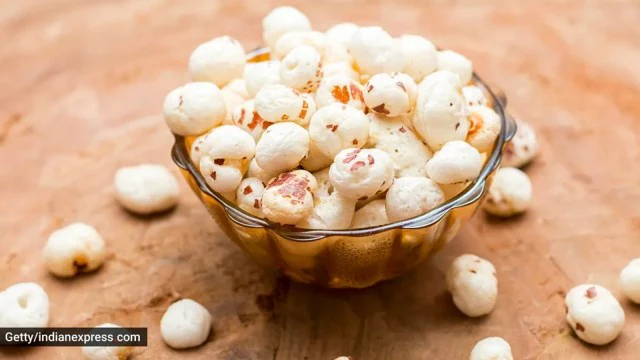
Foxnuts or makhanas, also known as lotus seeds, are often promoted as a healthy, low-calorie snack. Many people choose them as a guilt-free option due to their ability to satisfy hunger without adding too many calories. However, metabolic health coach Karan Sarin recently shared his personal experience that questions their popularity.
In an Instagram post, Sarin revealed that after eating 30 grams of makhanas, his blood sugar levels spiked by 76 points in just two hours. “I hope people don’t hate me for saying this, but this is a massive spike,” he said. According to Sarin, this happened because about 78% of the calories in makhanas come from carbohydrates. In the 30-gram portion he ate, there were 5 grams of protein and 23 grams of carbohydrates, out of which 4.5 grams was fiber.
He added that while makhanas are low in fat, their high carb content makes them less ideal for those watching their blood sugar levels. “I don’t understand the hype. I would rather have unsalted peanuts or even dal, which offer more protein, lesser carbs, and healthy fats,” Sarin noted.
What Do Nutrition Experts Say?
Fauziya Ansari, a dietitian at Apollo Spectra, Mumbai, explained that makhanas have become popular thanks to their health benefits and wide presence on social media. “They’re considered a great snack for those watching their calorie intake. Makhanas are rich in antioxidants and offer some amount of protein, which makes them a preferred choice,” she said.
However, she agrees that a spike in blood sugar levels is possible, especially when they are consumed in large amounts without breaks. “Makhanas are a carbohydrate-rich food. Eating too many at once can lead to a quick increase in blood glucose,” she explained.
Should You Stop Eating Makhanas?
While Sarin’s experience brings up an important point, it doesn’t mean makhanas are bad for everyone. The key lies in portion control and balance. For people with diabetes or those monitoring their blood sugar, it’s important to be mindful of how many makhanas are eaten at one time and to pair them with a protein or fat source to slow down sugar absorption.































